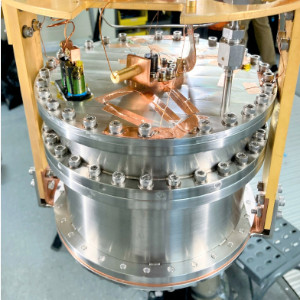Dark Matter
Towards Direct Detection of Dark Matter
What is Dark Matter? Astrophysical observations stretching back at least 50 years, including recent studies of the behavior of stars and galaxies, have clearly established that about three-quarters of the mass and energy of the entire universe is dark energy, and one- fifth is dark matter, leaving only about 5 percent for normal baryonic matter. Dark matter is invisible to observations across the optical spectrum, and is observed primarily by its gravitational effects. Without the binding effects of dark matter, the galaxies would not have formed, the stars would not shine, and life would not exist. Extensive studies suggest that dark matter must be some exotic form of matter not previously observed. Theoretical models favor Weakly Interacting Massive Particles (WIMPs) as an attractive candidate.
How can we detect Dark Matter? Over the past 20 years, scientists at Berkeley Lab have designed and developed the well-shielded environment needed to host experiments to search for WIMPs, resulting in the creation of the Sanford Underground Research Facility (SURF). Berkeley Lab was the lead lab for the LUX experiment located at SURF’s 4,850-foot level, nearly a mile underground. LUX led the world’s searches for WIMPs from its first results in 2013 until the experiment was decommissioned in 2016. Berkeley Lab now leads the LUX-ZEPLIN (LZ) experiment, which will be installed in the SURF laboratory space formerly occupied by LUX. LZ is a strong international collaboration, numbering over 250 scientists and engineers, and is one of the two major Generation 2 experiments sponsored by the Department of Energy (DOE) and National Science Foundation (NSF). We are also actively developing new detectors for the next generation of dark matter experiments beyond LZ, including the search for light dark matter models proposed by our theory group.
For research opportunities please contact Dr. Kevin Lesko, Prof Dan McKinsey, Dr Peter Sorensen.
